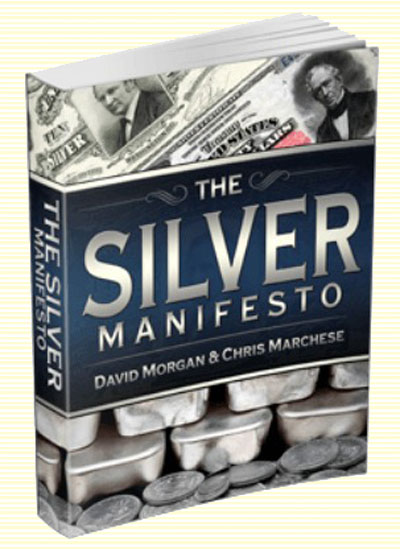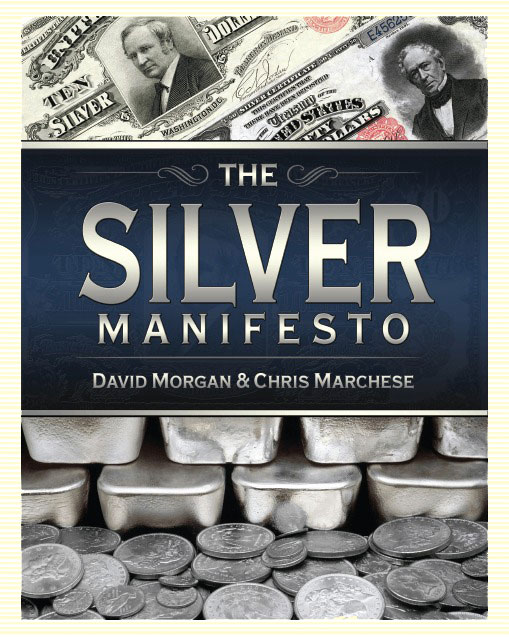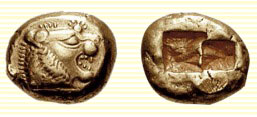The Silver Manifesto: Precious Metal Investors Guide To Surviving The Coming Debt Bomb
Steve St. Angelo

Investors worried about the highly leveraged fiat monetary system based on massive debt and derivatives need to read the new book, “The Silver Manifesto.” This book was written by David Morgan and Chris Marchese of Silver-Investor.com.
The primary purpose of writing The Silver Manifesto is to educate the reader as to why there is no way out the financial morass by the political class or the financial elite. In order accomplish this objective to examine every aspect of the silver market including:
• A monetary of history of silver from 3,200 B.C. to present day, with additional attention paid to the monetary history of silver in the United States. These chapters examine a vast array of topics including the origin of money, the storied history of silver's use as money since the advent of handwriting, the various coinage acts, the free banking era and the constitutionality of fiat "paper money"
• An in depth analysis of the supply-demand dynamics in the market, past, present and in the future. We examine "peak silver", industrial demand and most importantly investment demand and where it is headed in the short-to-medium term.
• In order to fully understand and appreciate the predicament the worldwide fiat monetary system is in, we walk through and explain the process of fractional reserve banking, maturity mismatching and the various stages on inflation. This is also necessary to understand intervention induced price suppression in the silver and gold markets.
• Money and Banking is also vital to understanding the only correct explanation of the cause and effect of the modern day business cycle, developed by Ludwig von Mises. In this loaded chapter, we through the ins and outs of Austrian Business Cycle Theory. We focus on interest and economic calculation, capital formation and accumulation and the market process. We also compare and contrast how economic growth and increased credit expansion backed by real savings vs. the central bank induced business cycle.
• These chapters build upon one another, applying everything to the current circumstance of the U.S. and global economy.
• The crux of every currency crisis is debt, which is exactly what the global economy and especially western world economies are saddled with today. This examination of the "debt bomb" is critical to comprehend why a wave of currency crisis will occur in the near future.
• Is It also important to understand how to put together a precious metals portfolio, including owning physical metals and an examination of various leveraged instruments to price of silver and gold. One of these has to do with investing in mining stocks and how to pick one.
• The final chapter examines the bigger picture, that is the underlying issues i.e cultural, etc.
David and Chris were nice enough to provide me with a few excerpts from the book. Here are a few:

Silver's Use as Money: a Brief History
While it is unclear who the first people to mine silver were, we can trace silver mining and silver used as money back to 3400 BC in Mesopotamia (although some argue that silver mining began before that, in Hungary, closer to 4000 BC). This was also beginning of writing, and correspondingly, journal entries. These entries were for local trade, which had various standards as a unit of account, such as silver and animals, amongst several other goods, illustrating that even 5,000 years ago, the market chose silver as a medium of exchange. While this money system was very primitive and remained so until coinage came about, it didn't stop other societies from using silver as a monetary unit nor did it impede the advancement of the monetary system.
The first instance of bimetallism, actually the use of three metals, began 1,400 years later (2000 BC) in Egypt. The monetary system evolved and had definitive weights for trade purposes as well as exchange rates against one another….
The Lydian System
An immense advancement in the monetary system was made by the Lydians, who were the first to utilize coinage (silver and gold) for monetary purposes, which first occurred around 700 BC. The Lydians were the first to not only coin money but to also develop the first system of coins, initially making them from gold and silver alloys. They were also the first to establish retail shops. Some argue it was King Alyattes who developed and then first coined the stater, while others argue it was King Gyges who first circulated this coinage.
 These small oval nuggets circulated throughout the East. As you can see, the oval nuggets were not 100% homogenous, so technically could not be called coinage. These small oval nuggets circulated throughout the East. As you can see, the oval nuggets were not 100% homogenous, so technically could not be called coinage.
King Gyges ruled from 690 to 657 BC, while King Alyattes ruled from 610 to 550 BC. Historians tend to link King Gyges with the first coinage and system of coins. These coins were actually not silver or gold, but rather an alloy of the two. Later, the son of King Gyges, King Croesus, greatly improved the smelting technique of his predecessor via separating silver and gold from the electrum. While either King Alyattes or King Gyges came up with the first coinage and system of coins, King Croesus originated the first bimetallic system of coins, with an exchange rate between the two, as follows:
1 gold stater = 8.17 grams of gold
1 silver stater = 10.89 grams of silver
1 gold stater = 10 silver staters
(8.17) x (1) = (10.89) x (10) OR
Gold-to-silver ratio = (108.90/8.17) = 13.33
Chapter 4: Silver Demand Dynamics
Silver has two demand dynamics. First, as discussed in the first two chapters of this book, is its monetary aspect, which dates back over 5,000 years; but also, because it is or was essentially an industrial metal "ahead of its time," it will soon show how vital it is for its many uses in industry. The potential future use in industry is so significant as to be essentially unlimited. We will be looking at the industrial aspect, followed by the fabrication and monetary aspect and forecasts……
Let's put silver's industrial demand growth into perspective and explain why it has unique dynamics unlike most other investments. In 1990, industrial demand totaled roughly 275,000,000 ounces. Just nine years later, industrial demand surged over 36% to 375,000,000 ounces. This means the compound annual growth rate was just over 3.5%. Over the next decade, ending 2010, industrial demand surged roughly 115,000,000 ounces to 510,000,000 ounces, or 36% +/- or 3.12% compound annual growth rate. Note that this was in the face of a rapid silver elimination from the photography industry, making it that much more impressive….
I highly recommend getting THE SILVER MANIFESTO book if you want to get a great understanding of history of money as well as all the different dynamics of the silver market. You can find out more about the book the website, THE SILVER MANIFESTO, or you can get a copy at Amazon.com.
srsroccoreport.com |




